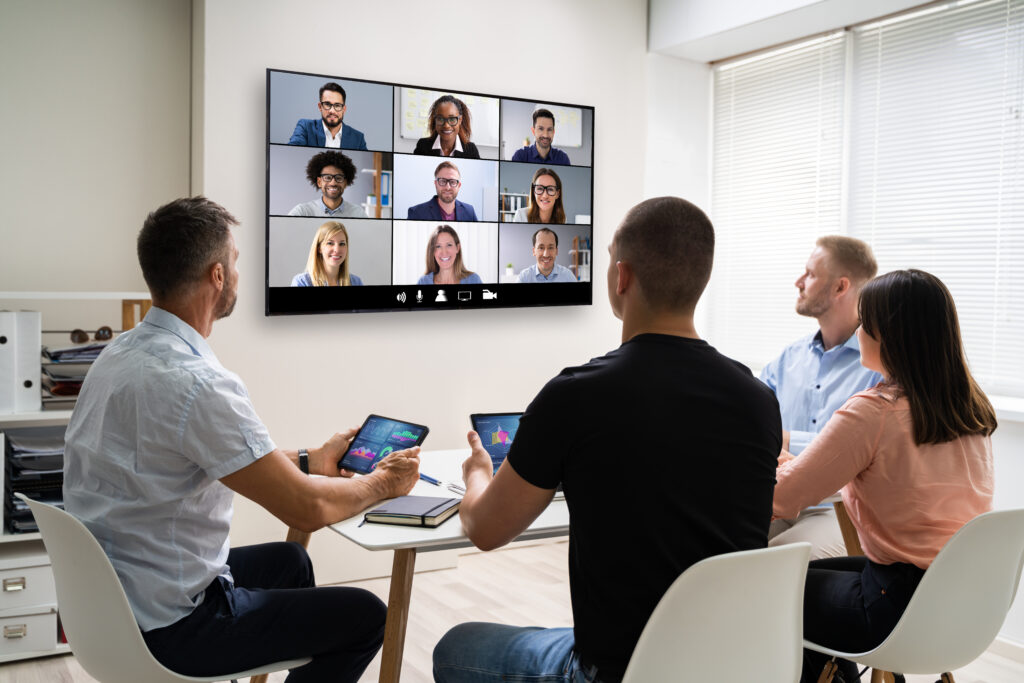Exploring Contactless Event Technology
September 29, 2023
The way we experience events has evolved significantly in recent years, driven in part by technological advancements and the need for safety in the face of global challenges. Contactless event experiences have emerged as a transformative trend, redefining the landscape of conferences, concerts, trade shows, and more. In this blog, we’ll delve into contactless event technology that’s revolutionizing how we engage with events while ensuring safety, convenience, and interactivity.

The Rise of Contactless Events
Contactless events have gained immense popularity and represent the future of event experiences. These technologies leverage various cutting-edge technologies to create seamless and interactive encounters for attendees.
Mobile Apps and Event Platforms
Mobile apps have become the cornerstone of contactless event experiences. Event organizers are investing heavily in developing intuitive, feature-rich apps that provide attendees with everything they need at their fingertips. These apps offer features such as:
- Virtual Agenda: Attendees can access event schedules, speaker information, and session details in real-time.
- Interactive Maps: Navigation tools within the app help attendees locate sessions, exhibitors, restrooms, and food vendors.
- Contactless Registration: Attendees can check in via QR codes, eliminating the need for physical badges and manual check-ins.
- Networking Tools: AI-powered matchmaking algorithms help attendees connect with like-minded professionals, fostering networking opportunities.
- Live Polls and Q&A: These features engage attendees during sessions, creating a dynamic, interactive experience.
Augmented Reality (AR) and Virtual Reality (VR)
AR and VR technologies have transformed contactless events by adding immersive elements. With AR, attendees can use their smartphones or AR glasses to access information overlaid onto the physical event environment. VR, on the other hand, allows for fully immersive virtual events. Key services include:
- Virtual Booths: Exhibitors can create virtual spaces that attendees can explore using VR headsets, enhancing the trade show experience.
- Virtual Venue Tours: Attendees can take virtual tours of event venues, familiarizing themselves with layouts and amenities.
- AR Wayfinding: AR apps guide attendees through event spaces, providing directional cues and information.
- Virtual Concerts and Performances: Musicians and artists can stage live performances in virtual environments, reaching a global audience.
Contactless Payment Solutions
Cashless and contactless payment systems are another essential component of contactless events. These systems offer convenience and security. Attendees can make purchases using:
- Mobile Wallets: Services like Apple Pay, Google Pay, and Samsung Pay are widely accepted at events.
- RFID Wristbands: These wristbands link to attendees’ accounts and can be used to make payments throughout the event.
- QR Code Payments: Attendees can scan QR codes at vendor booths to make payments, reducing cash handling.

Livestreaming and On-Demand Content
Livestreaming has become a staple of contactless events, allowing virtual attendees to participate in real-time. Event organizers can capitalize on this technology by:
- Offering Hybrid Events: Combining in-person and virtual components to expand reach and engagement.
- Recording Sessions: Allowing attendees to access sessions on-demand, extending the lifespan and value of the event.
- Interactive Livestreams: Integrating chat features, polls, and Q&A sessions into livestreams to foster audience engagement.
Conclusion
The shift towards contactless event technology represents a paradigm shift in how we conceive, plan, and execute events. By harnessing the power of mobile apps, AR/VR, contactless payments, and livestreaming, event organizers can create immersive, interactive, and safe experiences that cater to a diverse and global audience. As these technologies continue to advance, contactless events will likely become the new standard, offering attendees unprecedented convenience and engagement opportunities. Embracing these technologies is not just a trend; it’s the future of event experiences.
Whether your event is virtual, hybrid, or in-person, enhance your attendee’s journey with an event ecosystem built for your audience. Ready to walk through Stova's event technology solutions? Schedule some time with us today.

